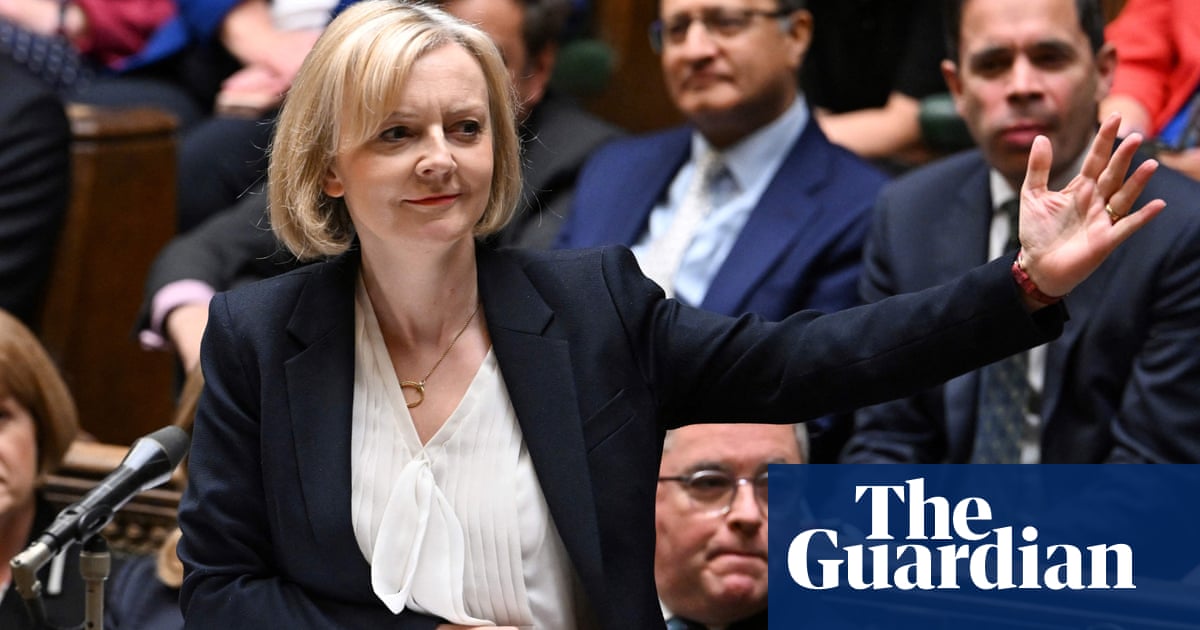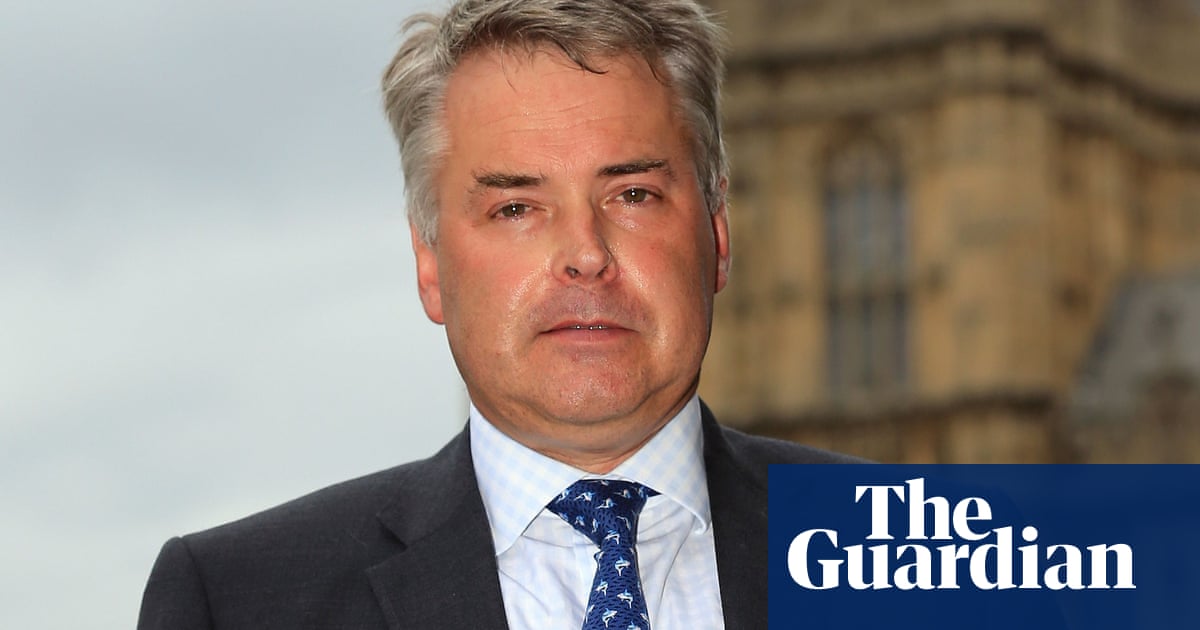Trussonomic lessons: what can be learned from former PM’s book? | Economic policy


Raw free-market economics is missing in action. Somewhere between its 1980s ascendancy and today, the media, politicians, civil service and even the corporate mainstream abandoned small government and low taxes.
At the heart of Liz Truss’s new book, Ten Years to Save the West, the former prime minister reckons this is the reason for Britain’s economic drift, alongside “unelected technocrats” overruling the “wishes of the people”.
The UK’s main economic institutions – the Treasury, Bank of England and the Office for Budget Responsibility (a “three-headed hydra”) – come under fire for standing in the way of her project, launched not with an election mandate but a Tory party selection process.
However, could there be other lessons from Truss’s 49 days in power – measurable in the shelf life of a lettuce – unacknowledged in a book with more pages?
Bond market meltdown
“There was no word of warning about any likely issues with the bond markets, and no one mentioned the issues surrounding liability-driven investments.”
The trouble is, this does not appear to be entirely true. Truss’s own economic advisers warned her that markets could crash if her policy changes were not handled with care.
Weeks before the mini-budget her team presented her with a paper that said: “The markets are nervous about the UK and about policy options. If immediate economic policy announcements are handled badly then a market crash is possible.”
Pensions crisis
Truss could more reasonably claim ignorance over liability-driven investments (LDIs). The Financial Times had sounded the alarm two months earlier, but it still remained a relatively obscure corner of the pensions market.
But to blame LDIs puts the cart before the horse. “It really was a tinderbox waiting for a spark – and the market upheaval provided it,” writes Truss. But what triggered that market upheaval?
Government bond yields had been climbing in the summer of 2022 as the world’s leading central banks raised interest rates to combat soaring inflation after the Russian invasion of Ukraine. But the mini-budget triggered a far more extreme jump in the UK, in a development labelled the “moron premium” by City economists.
Over four days, long-dated government bond yields rose by more than the annual increase in 23 of the past 27 years, in a “doom loop” as the financial crisis started to feed on itself before the Bank of England stepped in.
Smaller than furlough?
Truss argues “there had not been a major market reaction against recent spending commitments, including the furlough scheme, which had cost £70bn. In the greater scheme of things, the mini-budget’s effect on government borrowing was relatively small.”
However, furlough came in a very different context.
First, Truss had already committed to an energy price guarantee that could have cost as much as £200bn over 18 months. Her £45bn in tax cuts added to this already vast borrowing commitment.
Second, furlough came as the world’s largest central banks were buying billions of pounds in government bonds – keeping borrowing costs low. With inflation rising, those factors had kicked into reverse.
The anti-growth coalition
Furlough had been generally well received for preventing the biggest economic collapse in 300 years from becoming far worse by permanently scarring the economy.
By contrast, economists thought tax cuts directed at the rich would have a minimal impact on growth. And this was not the view of the OBR (it had not been asked to give one); but of Goldman Sachs and Bank of America.
Alongside criticism from the International Monetary Fund and President Joe Biden, Truss says “it became clear we were not just challenging UK economic orthodoxy, this groupthink extended to the leading powers of the west”.
after newsletter promotion
The Bank of England
In a book railing against short-termism and institutions, Truss reveals she thought about abolishing the OBR and sacking the Bank of England’s governor, Andrew Bailey, but concluded such a “declaration of war on the economic establishment” would have taken time she did not have.
Her criticism of the central bank is, though, topsy-turvy in places.
In one chapter she writes: “Central banks from the Federal Reserve to the Bank of England colluded with spendthrift governments, allowing money-printing to pay for the largesse.” But later she complains that turning off the printing press contributed to her downfall, as it drove up borrowing costs, and grumbles that the bank perhaps did not collude with her enough.
Truss is at least right that markets thought the bank was behind the curve with its interest rate stance. But it had made clear months earlier that it would begin reversing its quantitative easing programme by selling government bonds from September 2022.
Most economists do not buy that this was the primary contributor to the market meltdown after the mini-budget. It certainly did not help. But then why throw caution to the wind with a radical budget against this backdrop?
City bankers blamed the unexpectedly large tax cuts in the mini-budget, particularly plans to scrap the 45p additional rate of income tax, alongside a wider undermining of the UK’s institutional framework: sacking the Treasury permanent secretary, Tom Scholar, sidelining the OBR, and challenging the Bank’s independence.
The Bank may have “presided over the drift of economic policy in Britain for 30 years”, but Truss still craved its endorsement. “Given the lukewarm nature of their public statements, which implicitly accepted the criticisms made by our opponents, it is unsurprising that the markets were unconvinced,” she writes.
Threadneedle Street is also castigated for having “deliberately cast us adrift” by refusing to issue a full assessment of the economic effects of the mini-budget.
However, the Bank has no formal role in reviewing tax and spending decisions – a function left to the OBR, which Truss had sidelined – and normally passes minimal comment on them. It would also have been a challenge when, according to Bailey, it was cut out of the loop and left “blindsided” by her mini-budget plans.
The Office for Budget Responsibility
Britain has grown to “defer to the revered cult of the technocrat”, Truss writes, with the OBR and the Treasury the pinnacle in a Whitehall establishment full of leftwing “quangocrats” reliant on flawed economic models.
Truss may have valid criticism of the OBR’s forecasting record. It has been consistently wrong. But usually because it has been over optimistic. However, the main tax and spending constraints are not set by the OBR but by parliament – to which it is accountable.
After the OBR’s establishment under George Osborne, Truss says the agency “developed a life of its own and now essentially sets fiscal policy”.
“I’m not aware of any other Treasury anywhere in the world with such a rigid and inflexible arrangement.”
Her chancellor, Kwasi Kwarteng, could have changed the fiscal rules dictating how much Britain can borrow – a scorecard the OBR is only responsible for marking, not setting. After all, the UK’s fiscal rules have been changed more frequently than in almost any other advanced economy. But this did not happen.
Source link




